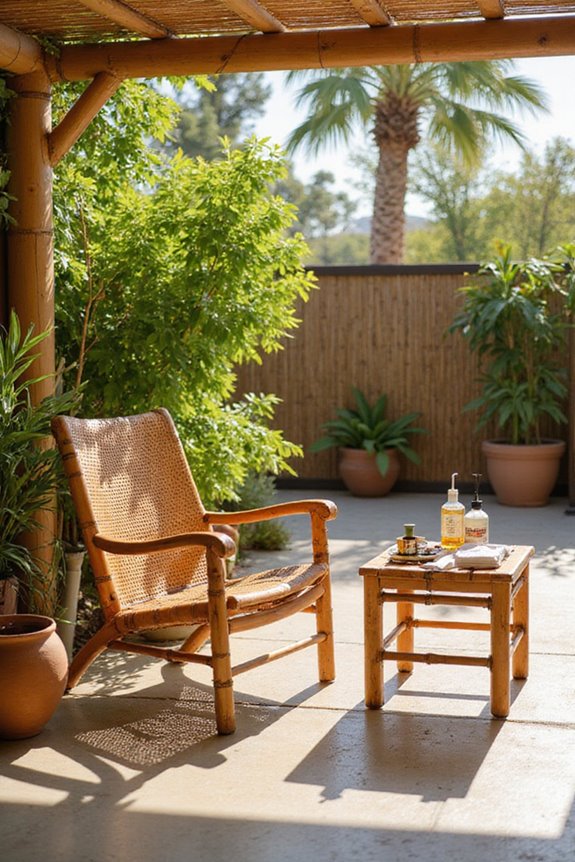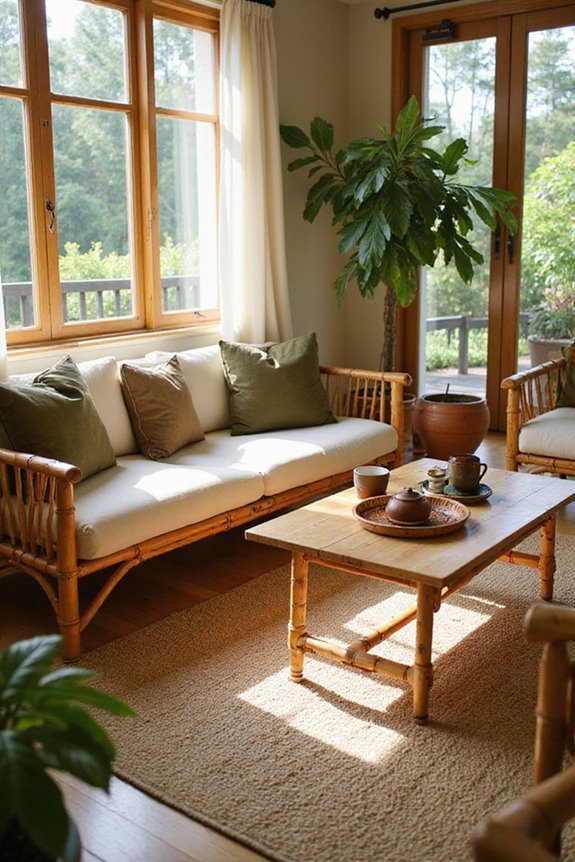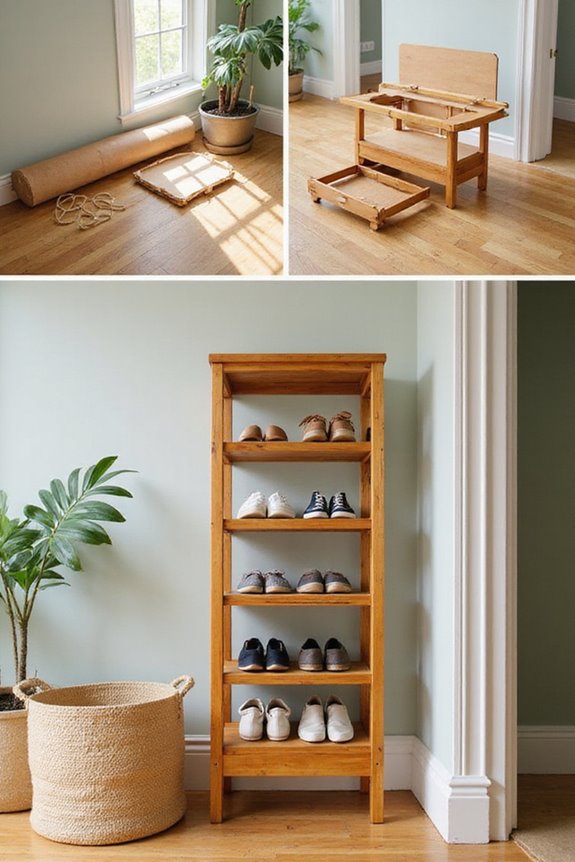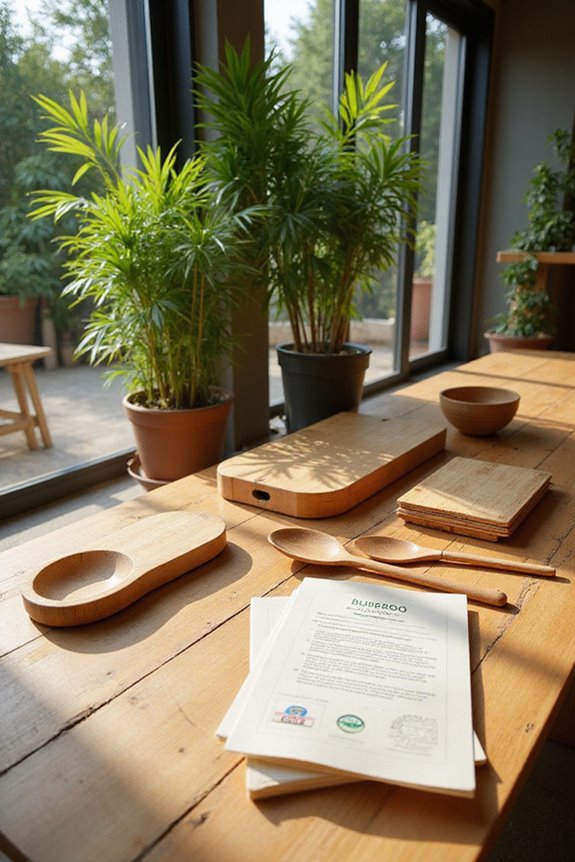To prevent bamboo furniture from cracking, we should focus on a few key practices. First, use longitudinal cutting and controlled drying techniques to maintain fiber integrity. Next, keep humidity between 40% and 60%, and maintain temperatures between 60°F and 80°F. It’s also essential to apply oil-based finishes for water resistance and inspect for cracks regularly, sealing small ones with mineral oil. These steps help in maintaining the furniture’s beauty and longevity. There’s more to explore on this topic.
Key Takeaways
- Use longitudinal cutting and controlled drying techniques to maintain bamboo’s structural integrity and minimize internal stresses.
- Maintain stable ambient conditions with humidity between 40%-60% and temperatures between 60°F-80°F to prevent moisture-related issues.
- Apply proper protective finishes like oil-based varnishes or water-based polyurethane to create a moisture barrier and enhance durability.
- Regularly inspect for minor cracks and promptly seal them with food-grade mineral oil or beeswax to prevent further damage.
- Reinforce bamboo furniture with epoxy resin and regular protective sealants to improve strength and resistance to moisture absorption.
Longitudinal Cutting and Controlled Drying Techniques
To effectively prevent bamboo furniture from cracking, we must focus on two key processes: longitudinal cutting and controlled drying techniques. Longitudinal cutting is vital, as it maintains the structural integrity of bamboo fibers. Using specialized machines, we create uniform strips that are ideal for lamination. This technique also helps in reducing internal stresses during drying.
Next, controlled drying is crucial. By drying bamboo at specific temperatures and durations, we minimize rapid moisture loss. This method helps prevent cracking and preserves the bamboo’s shape. Additionally, pre-treating bamboo with steam enhances its resilience against damage. Together, these methods guarantee our bamboo furniture remains strong and beautiful, making it a perfect addition to any home. Moreover, bamboo is a rapidly renewable resource, making it an eco-friendly choice for sustainable furniture.
Maintaining Stable Ambient Conditions
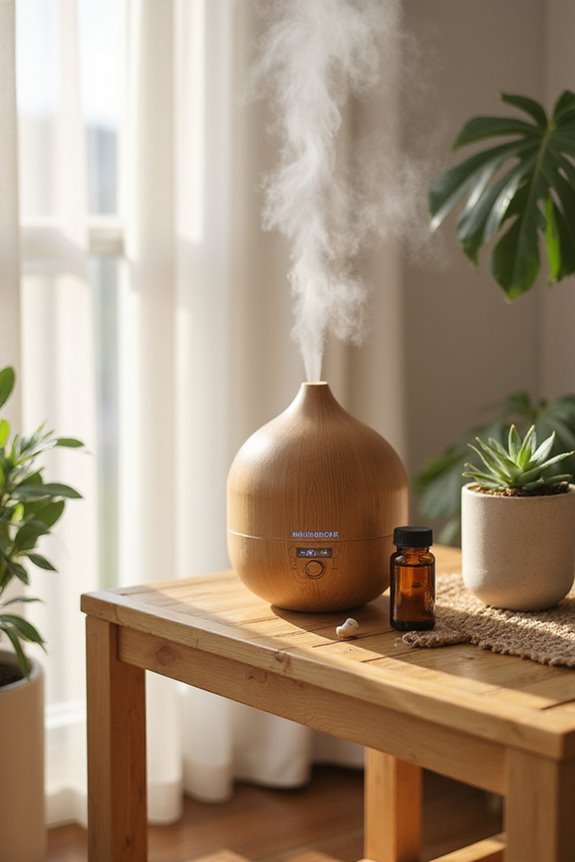
Maintaining stable ambient conditions is essential for the longevity of bamboo furniture. We should aim for a relative humidity between 40% and 60%. Too low humidity can dry out bamboo, making it brittle, while high humidity can lead to swelling and mold.
Temperature regulation is equally important. Keeping the temperature between 60°F and 80°F helps prevent cracking. We must avoid placing bamboo near heat sources or in direct sunlight.
To manage humidity, we might use humidifiers or dehumidifiers. Regularly testing and monitoring humidity levels can help us catch potential issues early. Additionally, ensuring that bamboo furniture is made from sustainable materials contributes to its durability and long-lasting nature.
Lastly, good ventilation promotes airflow and prevents excessive moisture buildup. By following these guidelines, we can guarantee our bamboo furniture stays beautiful and lasts for years.
Applying Proper Protective Finishes
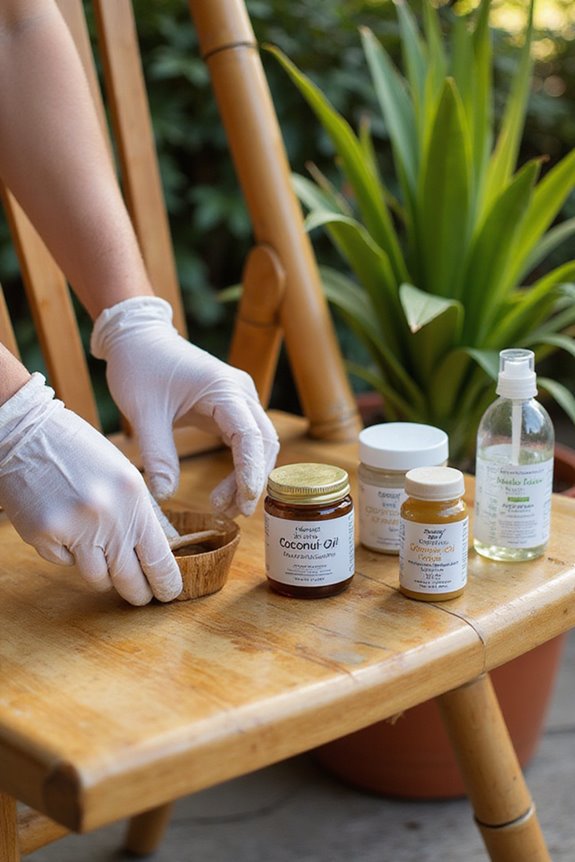
Applying protective finishes is essential for preserving bamboo furniture and preventing cracking. To start, we should choose the right protective coatings. Oil-based finishes, like tung or linseed oil, offer deep penetration and excellent water resistance. For indoor pieces, water-based polyurethane is a great low-odor option.
Next, we need to focus on proper finish application. Clean the bamboo surface thoroughly before applying two to three coats of varnish, allowing adequate drying time in between. Products like Forever Bamboo Protector or Varathane Premium Gel Stain are specifically designed for bamboo, ensuring effective protection. Additionally, maintaining a consistent oiling schedule for your bamboo furniture can help preserve its appearance and prevent moisture-related damage.
Finally, remember to maintain a regular recoating schedule. This keeps a moisture barrier intact and helps limit the expansion and contraction that leads to cracks.
Addressing Minor and Early Cracks Promptly
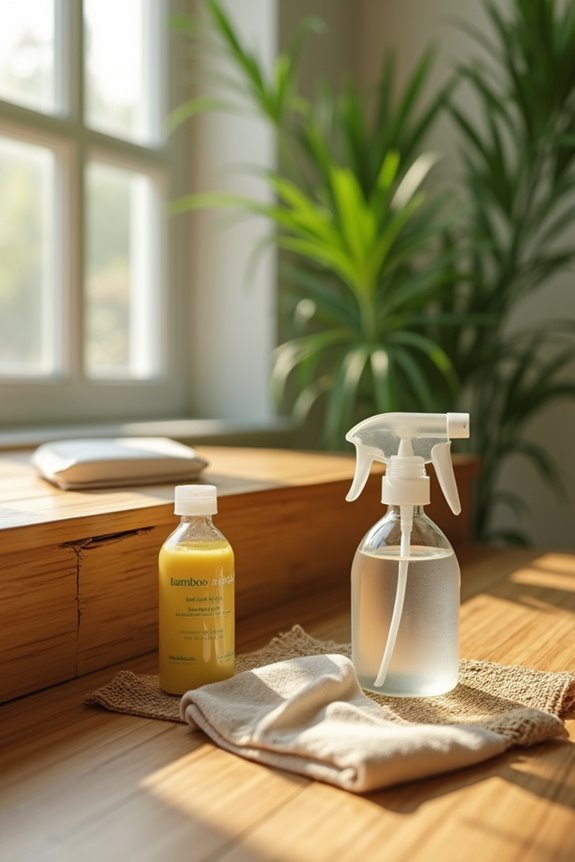
Addressing minor and early cracks promptly is vital for maintaining the integrity of bamboo furniture. We should regularly inspect our pieces for hairline splits, especially after seasonal humidity changes. Good lighting and magnification can aid in crack detection, allowing us to catch issues before they get worse.
If we find cracks, immediate cleaning is important. We can use soft brushes to remove debris and make sure they’re dry before applying any repair techniques. For small cracks, applying food-grade mineral oil or beeswax can seal and protect the area effectively. Additionally, ensuring that our bamboo furniture is kept in a low humidity environment will help prevent future cracking. We should also monitor repaired cracks regularly to guarantee they remain stable. By staying proactive, we can preserve our bamboo furniture and enjoy it for years to come.
Structural Repairs and Reinforcement
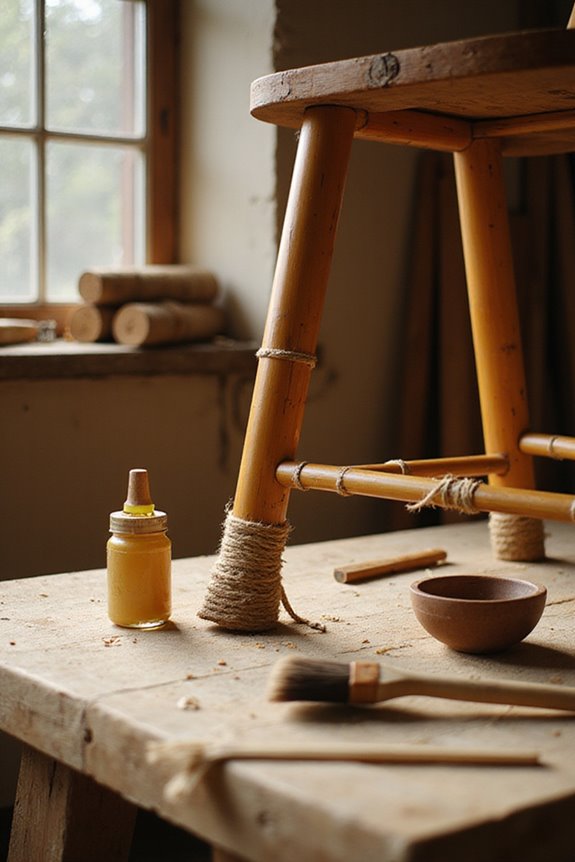
For material treatment, applying epoxy resin can saturate bamboo fibers, improving their tensile strength. Additionally, wrapping supportive structures with bamboo enhances overall durability. Surface treatments, like epoxy coatings with fine sand, boost adhesion and load resistance. By combining these techniques, we can create long-lasting bamboo furniture that resists cracking and stands the test of time. Furthermore, regular application of protective sealants not only prevents moisture absorption but also significantly reduces the risk of cracking over time.
Preventing Ongoing Damage Through Care Practices
To effectively prevent ongoing damage to bamboo furniture, we must adopt a consistent care routine. Here are some essential cleaning techniques and humidity control practices we can follow:
- Regular Dusting: Dust frequently with a soft cloth to avoid dirt buildup.
- Mild Cleaning: Wipe surfaces with a mild detergent and water, ensuring cloths are not overly wet.
- Proper Drying: After cleaning, dry bamboo under sunlight to prevent mold and cracking.
- Humidity Management: Keep furniture in well-ventilated areas and control indoor humidity levels.
- Protective Finishes: Apply specialized varnish or oils annually to create moisture barriers. Additionally, using eco-friendly materials can further enhance the longevity of your bamboo furniture.
Frequently Asked Questions
How Long Does Bamboo Furniture Typically Last Without Cracking?
Bamboo furniture typically lasts 10-15 years with proper care. By following maintenance tips like regular cleaning and applying protective finishes, we can guarantee our bamboo pieces remain beautiful and sturdy throughout their lifespan.
Can Bamboo Furniture Be Used Outdoors Year-Round?
It’s understood that bamboo furniture can be charming outdoors, but it’s not meant for year-round use. Its durability diminishes with harsh weather, so let’s make certain we protect our furniture for the best outdoor experience together.
What Types of Bamboo Are Best for Furniture?
Imagine a cozy space filled with warm, natural beauty; Moso bamboo and Guadua bamboo stand out as our top choices for furniture, offering strength and elegance, perfect for creating a welcoming atmosphere we all cherish.
Does Color Treatment Affect Bamboo’s Durability?
When we consider color treatment, it notably enhances bamboo durability. By applying heat and oils, we can improve moisture resistance and longevity, ensuring our bamboo furniture remains beautiful and resilient against environmental stresses together.
How Can I Tell if My Bamboo Furniture Is Drying Out?
As we gather around our bamboo furniture, let’s look closely for drying signs: visible cracks, rough textures, and dull surfaces. These moisture indicators can whisper secrets of neglect, urging us to act before deeper damage occurs.

